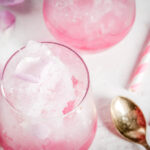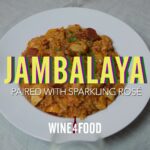 Warm temperatures, sunny days, salt-kissed ocean breezes, and dining al fresco. These are the essences of late spring and summer. So it makes perfect sense why more Americans think pink and reach for rosé colored glasses of wine come Memorial Day weekend.
Warm temperatures, sunny days, salt-kissed ocean breezes, and dining al fresco. These are the essences of late spring and summer. So it makes perfect sense why more Americans think pink and reach for rosé colored glasses of wine come Memorial Day weekend.
According to research giant Nielson, rosé sales truly are in the pink with a healthy fifty-three percent increase since last summer! Everything’s coming up rosés these days as producers from near and far step up to meet the demand. This means more rosés to try and pair with your favorite summer foods.
So why are you still drinking the same rosé?
Just like that same stretch of beach or cove on the lake you always return to each summer, it’s easy to find that one bottle of rosé you like and stick to that one style or well-known producer. But why not step outside your rosé comfort zone and explore a little? Sink your toes into another stretch of sand. There’s a world of delectable rosés to discover from far-flung wine regions.
“Blush” wines used to have a bad rap because many were poorly made or overly sweet. But these days there are better and more options in every color of the pink spectrum. Like the iconic flower it’s named after, rosés are beautiful wines that come in many shades of pink, from pale shell pink to fluffy cotton candy to vivid deep salmon. Each is unique and delicious and offers a different profile for the palate. It’s exactly like being a kid in a candy store; the rosé you pick is simply a matter of your personal preference.

But what to buy when the shelves at wine stores beckon you with ribbons of rosé-color bottles? Here are a few easy “rules of the rosé” for you to consider:
Color does not dictate quality. Nor does it indicate sweetness. A rosé, whether pale blush, coppery pink, or deep strawberry in color, can be equally refreshing. Paler rosés tend to be more bone dry and lighter on the palate; darker styles will have more concentrated fruit and body to them. The wine’s color is based on the type of grape(s) used and the length of time the skin of the fruit and the juice have contact, as well as the method of production. A well-made rosé should be refreshing and crisp on the palate and not cloying. All should be consumed young (e.g., one year from bottling).
Winemakers make rosé by juicing red grapes and allowing the liquid to soak with the skins, a process called maceration. A common reference is called saignée, (French for “bleed) as in the macerated juice “bleeds” off the grapes and skins to create the rosé. The less time the juice stays in contact with the skin (e.g. two or three days), will result in a paler color rosé. Once the desired color is reached, the skins are removed, and the juice is placed in fermentation tanks.
The delicately pink super dry rosé wines of Cotes de Provence AOC and Coteaux d’Aix-en-Provence AOC have traditionally been a benchmark for all other wines. In this Mediterranean region of Southern France, most wine production is dedicated to producing rosé and cultivating red grapes just for this purpose. Anyone who has had the privilege of sitting in a café in the South of France sipping chilled rosé and eating a salad chevre-chaud or pissaladerie will tell you it was a defining rosé wine moment.
 But Victoria James, Sommelier at New York City’s Cote Steakhouse and author of “Drink Pink: A Celebration of Rose” says it’s time be adventurous, “I recommend getting out of the Provence bubble as sadly, most rosé wines produced there now are mass-produced swill trying to get by with just the fame of the region. In Drink Pink, I highlight other regions worth checking out such as Reuilly, Sancerre, Chinon (The Loire Valley) and Schilcher from Austria. If you want to expand your palate, try rosé wines from Spain like Txakoli [Basque Country] or Rosado from Navarra, and in Italy Ramato Pinot Grigio from Friuli or Cerasuolo from Abruzzo.”
But Victoria James, Sommelier at New York City’s Cote Steakhouse and author of “Drink Pink: A Celebration of Rose” says it’s time be adventurous, “I recommend getting out of the Provence bubble as sadly, most rosé wines produced there now are mass-produced swill trying to get by with just the fame of the region. In Drink Pink, I highlight other regions worth checking out such as Reuilly, Sancerre, Chinon (The Loire Valley) and Schilcher from Austria. If you want to expand your palate, try rosé wines from Spain like Txakoli [Basque Country] or Rosado from Navarra, and in Italy Ramato Pinot Grigio from Friuli or Cerasuolo from Abruzzo.”
It’s easy just to stick to drinking to your favorite rosé style. Everyone should have a few go-to wines to stock their wine fridge. But much like ice cream, do you want to only eat vanilla when there are so many other flavors to taste? Like any wine – red, white, rose or sparkling – it’s fun to explore different styles and various regions of the world.
So, why not make this the summer to break out of your rosé bubble for a little tasting adventure? (You’ll find an amazing range of rosés bursting with fresh flavors.)
Push your rosé boundaries with these selections from beyond France and the USA.
Italy

“Rosato” wines are made throughout several Denominazione di origine controllata regions of Italy. Here are three of note; each with distinctly different hues
Chiaretto di Bardolino (Chiaro Italian for” light” or “pale”) are the rosé wines produced exclusively in the Bardolino DOC region around Lake Garda in Veneto using local grape varietals. The wines tend to be very refreshing with bright citrus, apricot, and herbal notes. Ramato (Italian for “copper”) is a coppery-pink rosé made from the Pinot Grigio grape. These wines can be full and fruity. Cerasuolo (Italian for “cherry”) is produced in Abruzzo from the Montepulciano grape.
Attems Ramato (Friuli)- 100% Pinot Grigio. Coppery pink with a rich fruit bouquet of cantaloupe, white peaches, bitter cherry and blackberries $18
Costaripa RosaMara (Valtènesi)- Blend of Groppello, Marzemino, Sangiovese, and Barbera. A delicate dry Chiaretto with notes of pomegranate, sour cherry and almond. $18
Masciarelli Villa Gemma (Cerasuolo d’Abruzzo) 100% Montepulciano grapes. Red-pink with an intensely floral bouquet with hints of thyme, pomegranate, and walnuts. $18
Spain
Spanish Rosado wines are produced throughout the country. In D.O. Navarra more than half of the wine production is dedicated to making rosés as rosy as your cheeks in the winter. D.O.Ca Rioja has seen a surge in popularity for its rosés made from both the Tempranillo, Graciano and Garnacha grapes. And Txakoli, while better known for its lemony-crisp white wines, also has rosés that are worth seeking out for their equally palate popping freshness.
Roca Altxerri Txakoli Rosé (Getariako Txakolina)- 100 percent Hondurrabi Beltza. Has the traditional tart brightness and slight fizz of traditional Txakoli wine with zesty red berries and citrus. $20
El Coto de Rioja Rosé (Rioja) – Blend of Tempranillo and Garnacha. Bright salmon pink with refreshing red cherry, citrus, and herbal notes $12
Bodegas Nekeas Vega Sindoa Rosé (Navarra) – 100 percent Garnacha. A medium-pink rose full of bright cherries and strawberries. $8
Greece
Greece has more than 300 indigenous grapes. These distinctly different rosés are made from two of them.
Kir-Yianni Akakies Rosé (Amyndeon) – 100 percent Xinomavro. Deep strawberry aroma and rouge color with an intense yet refreshing berry flavor profile. $14
Parparoussis Petite Fleur (Peloponnese) 100 percent Sideritis. Light salmon in color with orange hues. On the nose, orange blossom and stone fruit, on the palate dried cranberries, pomegranate, molasses and cherries, hint of herbal notes $16
Austria
Austria’s Shilcher rosé is made from the native Blauer Wildbachergrape (a relative of the better known Blaufränkisch grape); it produces a refreshing, fruitier style rose with higher acidity, thanks to the cooler climate.
Strohmeir Schilcher Rosé (Westeiermark/Western Styria) 100 percent. This is an all naturally-made rosé (no additives like sulfites) that is crisp and dry. $30
Even More Off the Beaten Path Rosés

South Africa
Backsberg Pinotage Rosé (Paarl) – 100 percent Pinotage. Fresh and juicy, with notes of strawberry, melon, and tropical fruit. $15
Mulderbosch Vineyards Rosé (Stellenbosch) – 100 percent Cabernet Sauvignon. Soft peachy- pink bursting with refreshing cherries and berries, $9
Israel
Recanati (Galilee)- Blend of Barbera and Merlot, this medium-bodied wine has deep rose-pink color and red berry flavors. $15
Jacques Capsouto Cotes de Galilee Cuvée Eva (Galilee) – Blend of Cinsault, Grenache, Mouvedre. A delicate pale dry rose with delicate citrus and stone fruit notes. $19
New Zealand/Australia
Middle Earth Rose (Nelson, New Zealand) – 100 percent Pinot Meunier. This wine has aromas of red summer fruits, cherries, and sweet spice, subtly smoky oak and soft tannins. $18
Cape Mentelle (Margaret River, Australia) – Blend of Grenache and Syrah. A very fresh and dry blushing pink rosé. Think cassis, melon, and citrus. $18
*Whether it’s called Rosato, Rosado, Ramato, or Chiaretto, a Rosé by any name is the epitome of the laid-back, simple pleasures of summer. Drink it chilled. Share with friends, and like a good party, mix it up!
Melanie Young co-hosts the national weekly radio show, The Connected Table LIVE! Wednesdays 2 pm EST on W4CY Radio and podcast permanently to iHeart.com and the free iHeart App.



